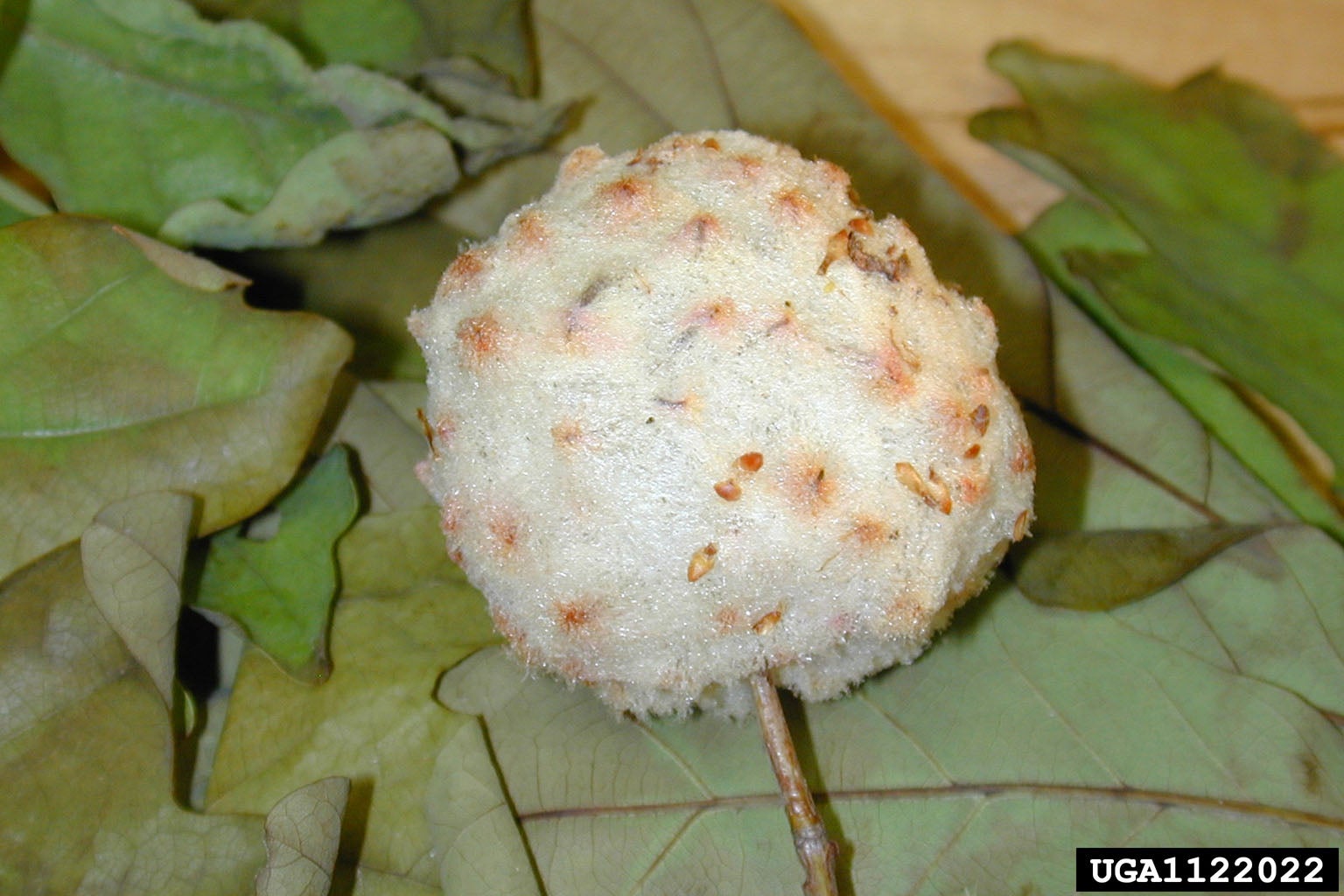What Are Wool Sower Galls – What To Do About Wool Sower Wasp Galls


Have you noticed what looks like a cotton ball with pink spots on an oak tree in your yard? Possibly, there are clusters of them spread through your oak trees. This is a type of gall that sometimes appears on leaves and twigs of the white oak and a few other oaks in your landscape. Read on for more information about wool sower gall on oak trees.
What are Wool Sower Galls?
You might not notice it immediately, as the wool sower gall takes two years or longer to develop. Galls and abnormal growths on landscape trees are concerning to property owners, but generally not damaging to the trees. Leaves may turn brown and fall off, but this is generally cosmetic.
The galls, also called oak seed gall, are a protective structure for the cynipid gall wasp. They are only considered a pest if you dislike what they’ve left on your oak trees. They do not bite, sting, or damage the tree. There are many varieties of the wasp. They are not beneficial, nor do they cause harm. Eighty percent of this gall type is on oak trees. You may also find them on rose, willow, and aster.
While other insects produce galls on various plants, the cynipid gall wasp is most prolific. These insects are thought to produce the largest amount of galls in North America.
Wool Sower Gall Wasp Info
The tiny and harmless cynipid gall wasp finds just the right leaf or twig that will produce the necessary materials to form the galls. Once wasps have laid eggs that become grubs, these secrete chemicals that activate the growth from their host.
These powerful chemicals initiate the host tree to produce the gall structure, which offers some protection until the wasps again emerge. These galls protect from insecticides and provide nutrition.
The wool sower gall wasps that eventually emerge are not damaging to the tree and they don’t sting. Many call them elusive; look closely for the hatchings to observe the unusual wasps.
Gardening tips, videos, info and more delivered right to your inbox!
Sign up for the Gardening Know How newsletter today and receive a free copy of our e-book "How to Grow Delicious Tomatoes".
Wool Sower Gall Treatment
As no harm befalls the trees affected, wool sower gall treatment is normally not necessary. Likewise, treatment is usually not effective anyway, as gall wasps are protected. Sprays may simply kill the beneficial insects that kill the wasps.
If you appear to have an infestation, pick up and destroy fallen leaves that have the remains of a gall. You may remove those found on the tree and discard.

Becca Badgett was a regular contributor to Gardening Know How for ten years. Co-author of the book How to Grow an EMERGENCY Garden, Becca specializes in succulent and cactus gardening.
-
 Moody Blooms For Spring: 8 Types Of Black Flowers To Add Drama To Spring Displays
Moody Blooms For Spring: 8 Types Of Black Flowers To Add Drama To Spring DisplaysFrom midnight burgundies to inky violets, several types of black flowers can enrich and embolden a spring display. Try these brooding bloomers for a moody garden
By Tonya Barnett
-
 Can Snake Plants Live Outside? Everything You Need To Know For Snake Plants Al Fresco
Can Snake Plants Live Outside? Everything You Need To Know For Snake Plants Al FrescoSnake plants can live outside given the right conditions, but be careful that they don't take over! Learn the best way to use snake plants in your landscape.
By Mary Ellen Ellis